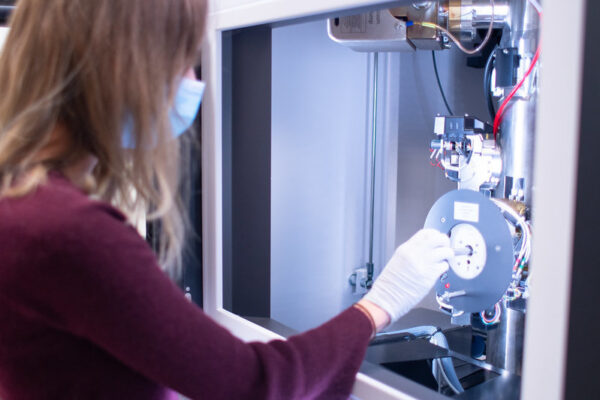2021/1/11 アメリカ合衆国・マサチューセッツ工科大学(MIT)

・ MIT と英国・インペリアル・カレッジ・ロンドンが、細菌と酵母菌の混合物のスコビー(SCOBY: symbiotic culture of bacteria and yeast)を利用した、強靱な機能性材料を低コストで容易に大量に製造する「Syn-SCOBY」技術を開発。
・ 汚染物質の検出等の様々な機能性を持たせた酵素を埋め込んだセルロース材料や、酵母菌を直接材料に取り込むことで、水質を浄化する「生きた材料」や、損傷を検出する「スマート」なパッケージング材料の作製が可能となる。
・ 一種類の細菌と一種類以上の酵母菌を含むコンブチャの種菌は、コンブチャに独特な風味を付与するエタノール、セルロースや酢酸を生成する発酵ファクトリー。
・ 数年前には大腸菌の利用により金ナノワイヤ等の材料を埋め込んだバイオフィルムを製造する技術を開発しているが、これらのフィルムは小型で薄く、大面積アプリケーションでの利用が難しかった。
・ 今回、特定の種類の細菌や酵母菌を混合したコンブチャの種菌に類似した微生物群の SCOBY を利用した、より強靱な材料を大量に作製する技術を開発し、過去の大腸菌システムの千倍の生成量を達成。資源を大量に使用した集中型製造に代わる、バイオロジーの活用による家庭や地元施設での多様な材料の製造技術の実現を目指す。
・ 遺伝子組み換えが困難な発酵用の天然の酵母菌株を、研究室で作製した酵母株菌のサッカロミケス・セレビシエで代用。コンブチャの種菌から分離したコマガタエイバクター・ラエティクスと呼ばれる細菌と組み合わせた。
・ 酵母菌に発光や汚染物質検出機能を持たせたり、汚染物質を検出後に分解したりするようプログラムできる。細菌はスキャフォールドの役割を担う強靱なセルロースを大量に生成する。酵母菌自体、またはそれらが生成する酵素のみを制御し、セルロースの構造中に組み込めるシステムを設計した。僅か数日間でセルロースを生成し、さらに時間をおくと浴槽のような大容積を満たすほど増量する。
・ 環境汚染物質のエストラジオールを検出する酵母菌を取り入れた材料の作製と、青い光に反応して発光タンパク質のルシフェラーゼを生成する酵母菌株の使用によりい同製造技術を実証。他種類の汚染物質、金属や病原体を検出する菌株も使用できる。一般的な培地に加え、糖分を含む紅茶での培養も可能。水浄化フィルターや、有用な材料を自宅で培養できるようなカスタム化を構想。
・ 本研究には、米国陸軍研究所(ARO)、MIT Institute for Soldier Nanotechnologies および MIT-MISTI
MIT-Imperial College London Seed Fund が一部資金を提供した。
URL: https://news.mit.edu/2021/living-materials-kombucha-0111
<NEDO海外技術情報より>
(関連情報)
Nature Materials 掲載論文(アブストラクトのみ:全文は有料)
Living materials with programmable functionalities grown from engineered microbial co-cultures
URL: https://www.nature.com/articles/s41563-020-00857-5
Abstract
Biological systems assemble living materials that are autonomously patterned, can self-repair and can sense and respond to their environment. The field of engineered living materials aims to create novel materials with properties similar to those of natural biomaterials using genetically engineered organisms. Here, we describe an approach to fabricating functional bacterial cellulose-based living materials using a stable co-culture of Saccharomyces cerevisiae yeast and bacterial cellulose-producing Komagataeibacter rhaeticus bacteria. Yeast strains can be engineered to secrete enzymes into bacterial cellulose, generating autonomously grown catalytic materials and enabling DNA-encoded modification of bacterial cellulose bulk properties. Alternatively, engineered yeast can be incorporated within the growing cellulose matrix, creating living materials that can sense and respond to chemical and optical stimuli. This symbiotic culture of bacteria and yeast is a flexible platform for the production of bacterial cellulose-based engineered living materials with potential applications in biosensing and biocatalysis.



